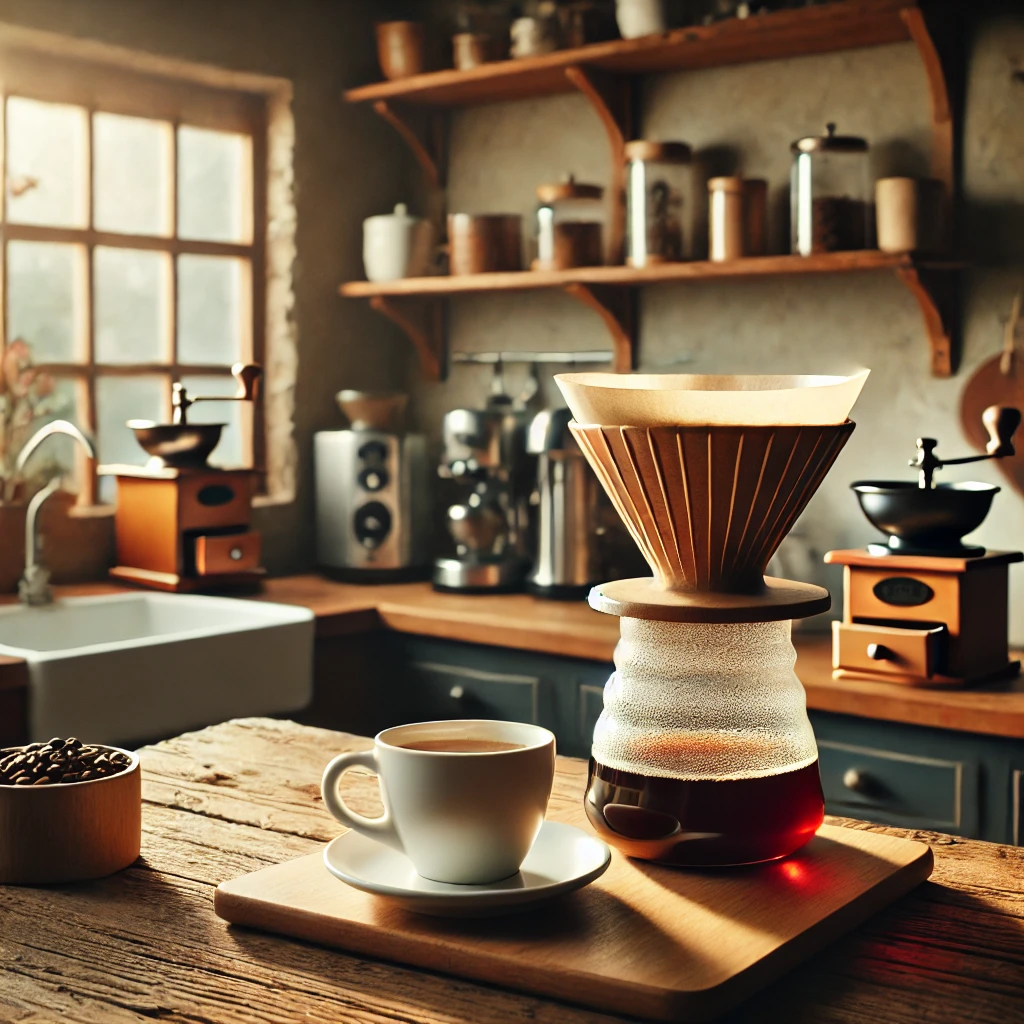
How to Select the Ideal Filter for Your Coffee
When it comes to brewing coffee, filters often don’t get much attention compared to the beans themselves, with all their varying origins, processing methods, and roasting levels. The conversation often revolves around brewing equipment, from the pour-over style to temperature control and user interface. Even water quality has its own time in the spotlight. However, it’s important to understand that the type of filter you use can have a significant impact on the taste of your coffee. From the filter material to its shape and size, there are several key factors to consider that will influence the final flavor in your cup.
Types of Coffee Filter Materials
The purpose of any coffee filter is fundamentally the same: to separate the coffee grounds from the hot water, ensuring that no grounds make their way into your cup. While the type of coffee and brewing method are certainly influential, the material of your filter also plays a crucial role in the flavor profile of your coffee.
Paper Coffee Filters
Paper filters are the most common type used in drip coffee machines and pour-over brewers. These filters are tightly woven and highly absorbent, making them effective at trapping most of the coffee oils and sediment. This results in a cleaner, brighter taste compared to other filter types. Without the presence of fine coffee grounds, the natural acids in coffee are more pronounced, giving it a crisp, clean mouthfeel. One major advantage of paper filters is ease of disposal—they can be discarded along with the used grounds. However, they are single-use and contribute to more waste. Paper filters are also ideal for those concerned about cholesterol, as they do a better job of preventing coffee oils from reaching your cup.
Metal Coffee Filters
Metal filters offer a different experience compared to paper ones. The metal mesh has larger pores, allowing coffee oils and finer grounds to pass into your cup. While this results in a fuller, richer taste, it can also add some texture to the coffee. The oils that make their way into the brew also contribute to its aroma, enriching the overall flavor. However, metal filters are more challenging to clean. Old grounds can get stuck in the mesh, so a thorough cleaning is necessary after each use to avoid residue buildup. Products like Cafiza Espresso Machine Cleaning Powder are great for cleaning metal filters and removing any remaining oils.
Cloth Coffee Filters
Cloth filters, while less common, are a middle ground between paper and metal filters. These filters are tightly woven, like paper filters, and are good at capturing small coffee particles. However, unlike paper, they don’t absorb much of the coffee oils, resulting in a coffee with a fuller mouthfeel without the presence of fine grounds. Cleaning cloth filters can be a hassle as they must be washed after each brew, but they can last for 30-100 uses before the oils and micro-grounds begin to affect the taste.
The Shape of Your Coffee Filter: Cone vs. Flat-Bottom
There has long been a debate among coffee enthusiasts about which filter shape is better for brewing coffee. Those who prefer cone-shaped filters argue that they create a well-balanced extraction due to the steep, continuous angle of the cone. On the other hand, advocates of flat-bottom filters believe they are easier to use and produce a superior cup without the need for specialized pouring techniques.
In an effort to settle this debate, the University of California Davis Coffee Center conducted a series of experiments to determine whether the shape of the filter basket makes a difference in taste. The results were striking. The study found that there was indeed a significant difference in the flavor profiles between cone and flat-bottom filter shapes, especially for light-roasted coffees. Cone-shaped filters emphasized citrus, berry, and sour flavors, while flat-bottom filters brought out more dried fruit, sweet, and floral notes. For dark-roasted coffees, the cone filters tended to produce more intense bitterness, whereas the flat-bottom filters resulted in more chocolate and woody flavors.
The reason for these differences lies in the way the hot water flows through the coffee grounds. The shape of the filter affects the “mass transfer” process, which influences how the compounds from the grounds are extracted into the water. UC-Davis continues to investigate the specific science behind these findings.
Frequently Asked Questions
Should I pre-wet a paper filter before brewing?
Yes, pre-wetting your paper filter is recommended by many coffee professionals. It helps remove the papery taste and warms up your carafe, allowing it to better retain the brewed coffee’s temperature. However, pre-wetting is not typically necessary for immersion brews.
What’s the difference between white and brown paper filters?
White filters are bleached, while brown filters are not. Both types are safe to use, and the bleaching process doesn’t impact the flavor of your coffee. However, bleaching is more harmful to the environment, and it adds an extra step to the manufacturing process.
What do the numbers on paper filters mean?
The numbers on paper filters correspond to the filter size. For example, a No. 2 filter is typically used for brewing 2-6 cups, No. 4 for 8-10 cups, and No. 6 for 10+ cups.
Can I reuse a paper filter?
Yes, you can reuse paper filters, especially if they are thicker. After discarding the used grounds, rinse the filter, let it dry, and you can use it again. Alternatively, investing in a metal filter can provide long-term use.
For a Chemex filter, should the side with the three folds face the spout or away from it?
The three-folded side should face the spout. This side is sturdier and less likely to collapse into the spout, ensuring that the coffee brews correctly. The spout allows air to escape during the brewing process, which is important for proper extraction.